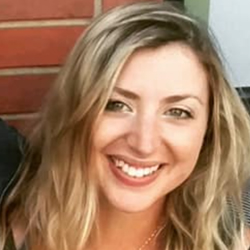With the winter holiday season in full swing, everyone’s schedule is overflowing. Unfortunately, the same is true for the animals held in captivity at zoos and traveling animal exhibits; but, unlike many of us, they are not given the choice to participate in the seasonal activities.
Instead, as is the norm in most captive environments keeping wild animals for entertainment purposes, the animals are not only constantly exposed to stressful stimuli or forced to participate in human-centered activities daily, but in many cases, these holiday events occur outside of regular visitor hours and during their only downtime; including the very inescapable and disruptive display of fireworks and light shows, which remain popular and frequent visitor draws during this time of year.
For example, The Smithsonian’s National Zoo in Washington, DC, which claims to “lead the Smithsonian’s global efforts to save species, better understand ecosystems and train future generations of conservationists” (National Zoo 1, 2023), hosts an event called Boo at The Zoo for Halloween, and another, called ZooLights, for Christmas.
Boo at the Zoo tickets include animal pumpkin feedings and themed photo ops, in addition to “special after-hours access for animal viewing at the Elephant Community Center, Small Mammal House, Reptile Discovery Center… and around 30 trick-or-treat stations around the Zoo” (National Zoo 2, 2023). Similarly, “ZooLights will take thousands of visitors into a winter wonderland lit by more than half a million environmentally friendly LED lights and illuminations” and hosts live musical performances and offers shopping experiences (National Zoo, 3). The National Zoo also provides rental services for private parties to use the animals for up-close and personal encounter experiences outside of their usual business hours.
Similar to The National Zoo, while some areas of zoos may be blocked off for these events restricting visitor access, many of the indoor viewing houses like the great ape house and the small mammal house remain open. There have been reports of loud cocktail parties starting after zoos’ typical closing times next to particularly noise-sensitive species, including elephants, reptiles, and marine animals like seals.
Numerous studies have confirmed that human-caused noise must be considered a serious and potentially behaviorally disruptive factor. It affects both aquatic and terrestrial species and may affect the communication, distribution, foraging, or homeostasis of animals (Kunc & Schmidt, 2019). Noise-induced cortisol increases have been observed and can cause a multitude of serious health issues, including immunosuppression, insulin resistance, cardiovascular diseases, and intestinal problems (Coppola et al., 2006).
Zoos that are attached to theme parks, like Busch Gardens, cause even more disruption and undoubtably illicit an increased stress response from the animals, as their Halloween events typically involve haunted house style attractions with actors whose sole job is to cause “jumpscares” among the visitors, which are designed to illicit loud and panicked responses from hundreds of human visitors each night. For example, Busch Gardens hosts a Halloween event called “Howl-O-Scream,” which features haunted houses, “scare zones,” “Scare-e-oke”, and human stunt shows.
Given that zoos are supposed to educate, it begs the question: what is the educational value of holding parties or other holiday-themed events on zoo grounds that have nothing to do with animals and are likely detrimental to the health and wellbeing of the very animals they claim to preserve and protect? As animal welfare and conservation research becomes more advanced and the true needs of wild animals to live healthy lives are revealed, the most popular (and increasingly false) guises that zoos and aquariums use to justify their existence simultaneously fall away into clearly misleading fabrications.
If you are finding that you are having an increasingly hard time distinguishing zoos and aquariums from glorified circuses, perhaps there is not such a big difference after all. Perhaps it is time to accept that zoos and aquariums exploit animals in captivity in the same ways circuses do—simply for the entertainment of humans and to make a profit—and always at the expense of the animals.
Join us in choosing not to support zoos and aquariums not only during the holiday season, but year-round, to help lessen the demand for these facilities to create more lives in captivity. Help us keep wild animals in the only place they truly belong: in the wild.
Sources
National Zoo 1, 2023. https://nationalzoo.si.edu/about
National Zoo 2, 2023. https://nationalzoo.si.edu/events/boo-zoo
National Zoo 3, 2023. https://nationalzoo.si.edu/events/zoolights
Kunc & Schmidt, 2019. https://royalsocietypublishing.org/doi/10.1098/rsbl.2019.0649
Coppola et al., 2006. https://pubmed.ncbi.nlm.nih.gov/16649947/
